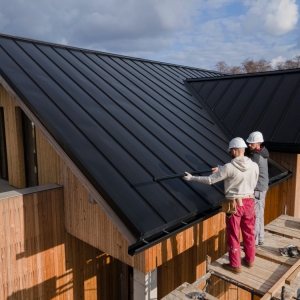In the realms of scientific research, industrial manufacturing, and quality control, maintaining precise environmental conditions is crucial. Whether testing the durability of electronic components, conducting biological research, or verifying the reliability of pharmaceutical products, the ability to create and sustain consistent temperature and humidity levels is essential. This is where Constant Temperature and Humidity Chambers come into play. These sophisticated chambers provide a controlled environment that enables researchers and industries to achieve accurate and reproducible results. In this article, we will discuss the benefits of using a constant temperature and humidity chamber and how they work.

Benefits of Using a Constant Temperature and Humidity Chamber
Accurate and Reproducible Results
Constant Temperature and Humidity Chambers offer precise control over temperature and humidity conditions, ensuring experiments and tests are conducted under consistent parameters. This accuracy enhances the reliability and reproducibility of results, making the data more meaningful and valuable.
Quality Assurance and Product Validation
In industries such as pharmaceuticals, electronics, and automotive, maintaining strict quality standards is crucial. These chambers allow manufacturers to validate the performance and durability of products under controlled environmental conditions, ensuring they meet industry standards and regulatory requirements.
Accelerated Testing
With the ability to simulate harsh or extreme environmental conditions, these chambers enable accelerated aging studies. This capability helps predict product lifespan and performance over extended periods, saving time and resources compared to natural aging tests.
Improved Research and Development
Researchers can create controlled environments that closely mimic specific natural conditions, such as tropical or arctic climates. This enables scientists to study the impact of climate change or extreme conditions on materials, organisms, and processes.
Reduced Risk of Contamination
In biological and pharmaceutical research, maintaining a controlled environment is critical to prevent contamination and preserve the integrity of sensitive samples and cultures.
Energy Efficiency Studies
For energy-related research, these chambers facilitate the study of materials and devices under varying temperature and humidity conditions, aiding in the development of more energy-efficient technologies.
Consistent Manufacturing Processes
In manufacturing industries, using these chambers for quality control ensures products are made under standardized conditions, leading to consistent and reliable end products.
Advanced Materials Research
Researchers can investigate the behavior of materials under different environmental conditions, allowing them to optimize materials for specific applications and identify suitable materials for challenging environments.
Weathering Studies
These chambers are used to study the effects of exposure to temperature, humidity, and other environmental factors on materials, coatings, and surfaces, providing valuable insights for various industries.
Customizable Testing Profiles
Many chambers offer programmable controllers that allow users to create customized temperature and humidity profiles for specific experiments or testing protocols, enhancing flexibility and adaptability.
Long-term Preservation
For industries like museums and archives, these chambers are used for the long-term preservation of historical artifacts, artwork, and delicate items.
Safety Assurance
Safety features in these chambers protect both the equipment and the user from potential hazards due to overheating or extreme humidity levels.
How Does a Constant Temperature and Humidity Chamber Work?
Constant temperature and humidity chambers work by controlling the air's temperature and humidity inside the chamber using various components, including:
Heater or Cooling Unit: Controls the air temperature. The heater uses electricity to heat the air, while the cooling unit uses a refrigerant to cool the air.
Humidifier or Dehumidifier: Manages the air's humidity. The humidifier adds water vapor, and the dehumidifier removes water vapor.
Fan: Circulates the air inside the chamber, ensuring even distribution of temperature and humidity.
Sensor: Measures the temperature and humidity of the air inside the chamber and sends this data to the controller.
Controller: Monitors the sensor data and adjusts the heater, humidifier, or dehumidifier as needed to maintain the desired conditions.
The basic principles of temperature and humidity control are as follows:
Heater: Uses electricity to heat the air. The amount of heat added is determined by the temperature setting on the controller.
Cooling Unit: Uses a refrigerant to cool the air. The cooling applied is determined by the temperature setting on the controller.
Humidifier: Adds water vapor to the air. The amount added is determined by the humidity setting on the controller.
Dehumidifier: Removes water vapor from the air. The amount removed is determined by the humidity setting on the controller.
Fan: Circulates the air to ensure even temperature and humidity distribution.
Sensor: Measures temperature and humidity, providing data to the controller, which adjusts the system as needed.
Conclusion
Constant Temperature and Humidity Chambers are a testament to human ingenuity in creating controlled environments for a myriad of purposes. From advancing pharmaceutical research to ensuring the robustness of cutting-edge electronics, these chambers have become integral to scientific progress and industrial innovation. By providing the means to accurately simulate specific environmental conditions, researchers, engineers, and manufacturers can unravel the mysteries of materials, test the limits of technology, and elevate the quality of products that shape our modern world.







